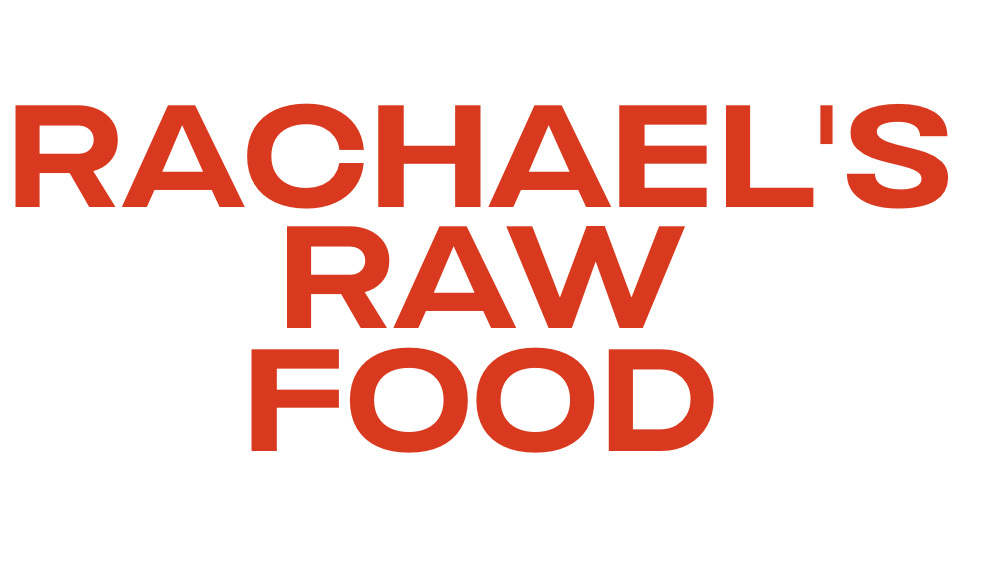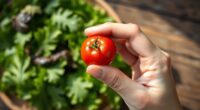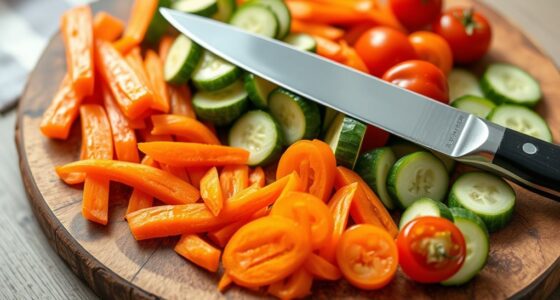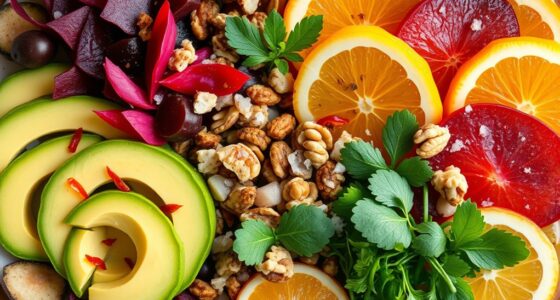In early months like spring, enjoy raw strawberries, peas, and radishes for maximum sweetness and crunch. Summer offers ripe tomatoes, cucumbers, and berries perfect for raw snacking, salads, or smoothies. During autumn, crisp apples and pears shine raw, while in winter, root vegetables like carrots and turnips are best raw or lightly cooked. To discover more about enjoying seasonal produce at its peak, continue exploring this detailed guide.
Key Takeaways
- Spring: Enjoy strawberries, peas, and asparagus raw for freshness and sweetness; store properly and consume quickly.
- Summer: Best raw options include tomatoes, cucumbers, berries, and peaches, retaining flavor and texture.
- Autumn: Raw apples and pears are ideal for snacking, baking, or salads during fall months.
- Winter: Root vegetables like carrots, parsnips, and turnips can be eaten raw or lightly cooked; store in cool, dark places.
- Seasonal produce varies throughout the year, with peak raw enjoyment aligning with harvest times for best flavor and nutrition.
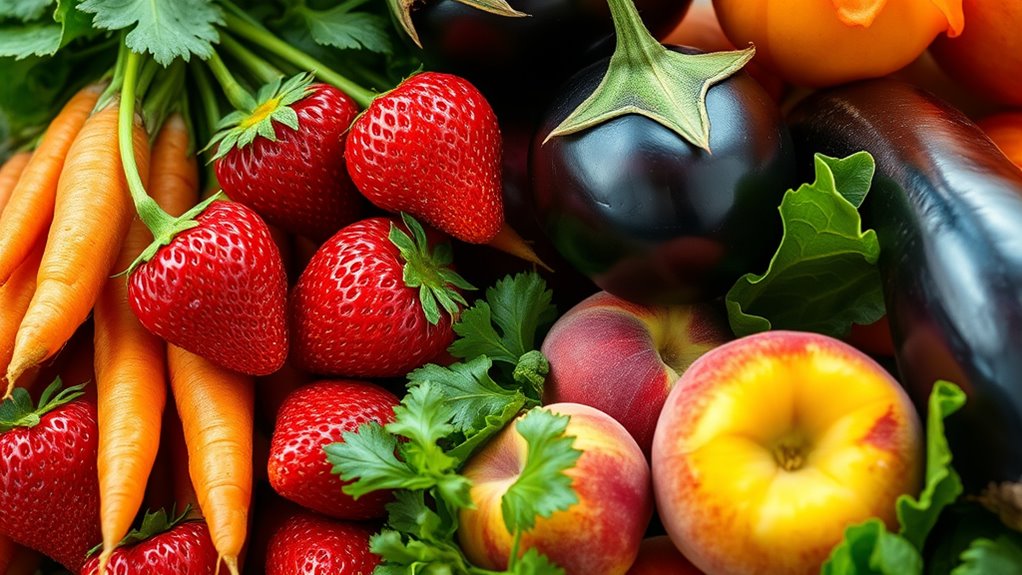
Have you ever wondered which fruits and vegetables are freshest each season? Knowing what’s in peak harvest can help you enjoy produce at its best flavor, texture, and nutritional value. When selecting seasonal items, it’s helpful to think about not only how to store them but also the best cooking methods to maximize their taste and health benefits.
In spring, fresh strawberries, peas, asparagus, and radishes start to appear. These delicate produce items are best enjoyed raw or lightly cooked to preserve their natural sweetness and crispness. For example, strawberries shine in salads or as a topping for yogurt, while peas are perfect raw in salads or quickly steamed for a tender bite. Asparagus can be grilled or roasted with a little olive oil and lemon, which enhances their flavor without overpowering their subtle earthiness. When storing spring vegetables, keep strawberries in the fridge in a breathable container and consume them quickly to prevent spoilage. Asparagus should be stored upright in a jar with a little water at the base, covered loosely with a plastic bag, and used within a few days. Light cooking methods like steaming or roasting are ideal for maintaining nutrients and texture.
Summer brings an abundance of juicy tomatoes, peaches, berries, and cucumbers. These fruits and vegetables are best enjoyed raw, as they are at their peak flavor and texture. Tomatoes and cucumbers are great in salads or as fresh snacks. Peaches and berries are perfect for eating plain or adding to smoothies and desserts. If you want to cook summer produce, opt for quick methods like sautéing or grilling to intensify flavors without losing their freshness. For storage, keep berries refrigerated in a breathable container, washing them just before eating to prevent mold. Tomatoes should be stored at room temperature away from direct sunlight to preserve their flavor, and they’re best eaten raw or gently heated. Berries and peaches are highly perishable, so consume them soon after purchase, or freeze them for longer storage.
Autumn introduces apples, squash, pumpkins, and pears. Many of these fruits can be enjoyed raw but also lend themselves beautifully to baking, roasting, or simmering. Apples and pears are versatile—raw in salads or baked into pies. Squash and pumpkins benefit from roasting, which caramelizes their sugars and deepens their flavor. When storing autumn produce, keep apples and pears in a cool, dark place or in the fridge crisper. Squash and pumpkins should be kept in a cool, dry, well-ventilated area until ready to cook. Roasting or baking are excellent cooking methods for autumn vegetables, bringing out their natural sweetness and making them more digestible.
Winter features hearty root vegetables like carrots, parsnips, and turnips, which are delicious raw or cooked. These vegetables hold up well in storage, kept in a cool, dark, and humid place to extend freshness. Cooking methods such as roasting, boiling, or sautéing work well for winter produce, intensifying their flavors and softening their texture. Carrots and parsnips can be eaten raw in salads or steamed for a quick side. Turnips are delicious roasted or added to hearty stews, where their earthiness complements other winter ingredients. Proper storage ensures you can enjoy these vegetables long after their harvest, allowing you to incorporate seasonal flavors into your meals throughout the colder months.
Frequently Asked Questions
How Can I Tell if Produce Is Truly Seasonal?
You can tell if produce is truly seasonal through visual inspection—look for freshness, vibrant colors, and firmness, which indicate peak ripeness. Additionally, prioritize local sourcing, as local farmers tend to harvest crops at their natural peak. When you buy locally and observe quality signs, you’re more likely to get produce that’s in season, ensuring better flavor and nutrition. Trust these cues to enjoy the freshest, most seasonal produce.
Are There Any Health Benefits to Eating Seasonal Fruits and Vegetables?
Think of seasonal fruits and vegetables as nature’s treasure chest, bursting with vibrant nutritional advantages. Eating them when they’re in season boosts your immune system and enhances taste, making each bite a symphony of freshness. These foods are at their peak, delivering more vitamins and antioxidants than out-of-season options. So, by choosing seasonal produce, you’re fueling your body with the purest, most flavorful nutrients, turning healthy eating into a delicious adventure.
How Can I Store Seasonal Produce to Extend Freshness?
To extend freshness, you should use proper refrigeration tips and storage containers. Keep your seasonal produce in breathable containers or perforated bags to prevent moisture buildup, which causes spoilage. Store fruits and vegetables at appropriate temperatures—most in the crisper drawer—and avoid overcrowding. Regularly check for ripeness and remove any spoiled items promptly. Proper storage helps preserve flavor, texture, and nutritional value, ensuring you enjoy your produce longer.
Can Seasonal Produce Be Frozen for Later Use?
Yes, you can freeze seasonal produce for later use. Using proper freezing techniques helps preserve flavor and texture, making your fruits and vegetables taste fresh even months later. First, clean and cut your produce, then blanch when necessary to lock in flavor. Store it in airtight containers or freezer bags, removing excess air. This way, you enjoy seasonal flavors all year long without sacrificing quality.
Are Organic Seasonal Options Better Than Conventional Ones?
Organic seasonal options are generally better than conventional ones because organic farming avoids synthetic pesticides, reducing your exposure to pesticide residues. Plus, organic produce often supports sustainable practices and better soil health. While they might cost more, you get peace of mind knowing you’re eating foods grown without harmful chemicals. So, choosing organic seasonal produce benefits both your health and the environment, making it a smarter, more responsible choice.
Conclusion
As the seasons dance from one to the next, let your plate be a vibrant canvas painted with nature’s freshest treasures. Embrace each month’s bounty like a secret garden waiting to be explored, bursting with flavor and color. When you choose seasonal produce, you’re not just nourishing your body—you’re riding the tide of nature’s rhythm, turning every meal into a celebration of life’s beautiful, fleeting moments. Eat seasonally, and let your taste buds bloom.
